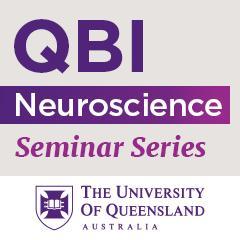Professor David Adams - University of Wollongong, NSW : "Analgesic a-conotoxins: Role of GABAB receptor modulation of ion channels in neuronal excitability and nociception"

Speaker:
Professor David Adams
University of Wollongong
NSW
Title: Analgesic a-conotoxins: Role of GABAB receptor modulation of ion channels in neuronal excitability and nociception.
Conotoxins (conopeptides) are a diverse group of peptides isolated from the venom of marine cone snails. Numerous Conus peptides modulate pain by interacting with voltage-gated ion channels and G protein-coupled receptors (GPCRs). Opiate drugs targeting the µ-opioid GPCR have long been used due to their efficacy despite the many undesirable side effects associated with their use, including addiction and overdose. It has been shown that various voltage-gated calcium channels and inwardly rectifying potassium channels respond to the activation of a variety of GPCRs. Thus, regulation of these ion channels by other GPCRs may be a viable alternative in the management of pain. Analgesic α-conotoxin Vc1.1 has been shown to activate GABAB receptors (GABABR) resulting in the inhibition of Cav2.2 and Cav2.3 channels and potentiation of GIRK-mediated K+ currents in mammalian primary afferent neurons. Furthermore, Vc1.1 and the GABABR agonist, baclofen, potentiate inwardly-rectifying K+ currents in HEK293 cells recombinantly expressing human GIRK1/2 channels and GABABR. Hyper-excitability and ectopic firing are characteristic sensory neuron responses to nerve injury and chronic pain. In adult mouse dorsal root ganglion (DRG) neurons, GABABR-dependent GIRK channel potentiation by Vc1.1 and baclofen hyperpolarize the cell membrane potential and reduce excitability. Similarly, in human pluripotent stem cell (hPSC)-derived sensory neurons both baclofen and Vc1.1 significantly reduced membrane excitability by hyperpolarizing the resting membrane potential and increasing the rheobase for action potential firing. Our recent research, driven by coupling molecular dynamics simulations and docking studies with site-directed mutagenesis and whole-cell patch clamp electrophysiology, has identified a putative binding site for the analgesic α-conotoxins on the GABABR, which is distinct from the orthosteric binding site for GABA on the extracellular Venus Flytrap (VFT) domain of the GABAB R1 subunit. The allosteric binding site for the analgesic a-conotoxins is at the interface of the VFT domains of the GABAB R1 and R2 subunits. Our findings are consistent with the functional expression of Cav and GIRK channels in DRG neurons and their involvement in GABABR-mediated anti-nociceptive activity in response to baclofen and a-conotoxin Vc1.1. A new scenario involving diverse GABABR signaling mechanism(s) underlies the analgesic properties of α-conotoxins is emerging.
About Neuroscience Seminars
Neuroscience seminars at the QBI play a major role in the advancement of neuroscience in the Asia-Pacific region. The primary goal of these seminars is to promote excellence in neuroscience through the exchange of ideas, establishing new collaborations and augmenting partnerships already in place.
Seminars in the QBI Auditorium on Level 7 are held on Wednesdays at 12-1pm, which are sometimes simulcast on Zoom (with approval from the speaker). We also occassionally hold seminars from international speakers via Zoom. The days and times of these seminars will vary depending on the time zone of the speaker. Please see each seminar listed below for details.



